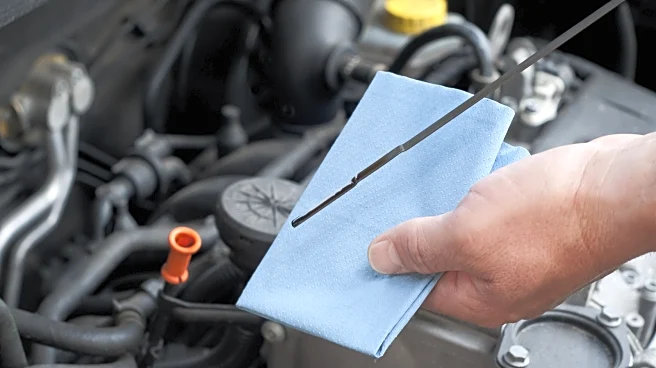
Keeping a combustion-engined car in shape requires some effort. Part of that is changing the motor oil and filter on a regular basis to lubricate the moving metal components and keep the engine in good health. It's a fairly easy task to do for under $20, even for non-professionals. However, maintaining the correct oil level is a crucial aspect of this upkeep. Engines typically hold around four to eight quarts of oil, depending on how many cylinders they have. You should be able to find your exact
specifications in your owner's manual.
If you add more oil to your engine than what your manufacturer recommends, you, among other things, run the risk of increasing pressure in the lubrication system, which can damage the engine seals and gaskets, leading to costly repairs. Conversely, you want to ensure there's enough oil to keep things running smoothly. Putting too little oil in your car is just as potentially dangerous as overfilling, as it reduces lubrication and consequently increases friction and heat in the engine. Not only does this increase wear and tear on the engine itself, but it can also cause overheating and a buildup of debris.
Therefore, in addition to timely oil changes, it's smart to check regularly to ensure that the balance of your engine oil level is correct, no matter whether you have a new, healthy engine that slowly burns through oil or an old mill showing its age and therefore needing more frequent changes and top-ups between changes.
Read more: Do Turbo Engines Need More Frequent Oil Changes?
The Dangers Of Underfilling Your Motor Oil

Ideally, your oil level should be between the lower and top marks on your engine oil dipstick. At this point, enough oil is being sent to the vital lubrication points on the surface of moving parts like pistons, cylinder walls, camshaft, and bearings, allowing them to glide against each other without generating too much heat. When you don't add enough, the oil becomes unable to lubricate smoothly or help cool the engine as intended, and friction builds up quickly as the engine runs.
Without a sufficient layer of oil to keep all the moving pieces gliding smoothly, metal parts continue to rub against each other and become too hot -- to the point where they could expand abnormally and weld together, resulting in engine seizure and necessitating a complete engine replacement. Another issue you may likely face when you underfill your car with oil is that it might not adequately circulate through the engine to keep it clean internally.
Whether mineral, semi-synthetic, or full synthetic oil, all lubricants have varying degrees of solvency for solids, gases, or liquids. This process helps maintain engine cleanliness and, along with the blended dispersants and detergents included, keeps engine components free from sludge, deposits, and other bits of dirt that accumulate from the combustion process. Sadly, driving with low engine oil can affect your oil's ability to carry out this important cleaning function, as oil gets contaminated more quickly, leading to sludge building up in places you don't want. As sludge builds up, it can clog up oil passages and limit the oil's ability to get where it needs to go in the engine, compounding the issue further.
Symptoms That May Indicate Your Car Is Suffering From Low Oil

So often, drivers succumb to the temptation of waiting for the oil warning light to illuminate on their car's dashboard before taking action -- but this is risky; by the time the light comes on to warn you, the oil level might have dropped dangerously low. So, unless your car has an electronic oil monitor that keeps track of oil level without the need for manual inspection, it's good practice to proactively check your oil level at least once a month or every 1,000 miles and pay attention to the early signs, so you can catch the issue quickly and avert long-lasting damage to your engine.
When the oil inside your engine runs low, it might manifest in obvious symptoms such as knocking or ticking sounds, which are the sounds of metal surfaces scraping against one another due to insufficient lubrication. Another sign that indicates a possible low engine oil level is engine overheating. This occurs because there's too much friction.
Also, without enough lubrication, there'll be poor performance thanks to that added friction, causing the parts to become slower as they are thrown out of sync. This can result in poor fuel economy, reduced engine power, and slow acceleration. Other symptoms can include the oil smelling burnt and looking dark, smoke from the exhaust, or difficulty starting the car.
Want more like this? Join the Jalopnik newsletter to get the latest auto news sent straight to your inbox...
Read the original article on Jalopnik.

